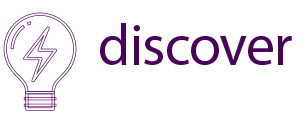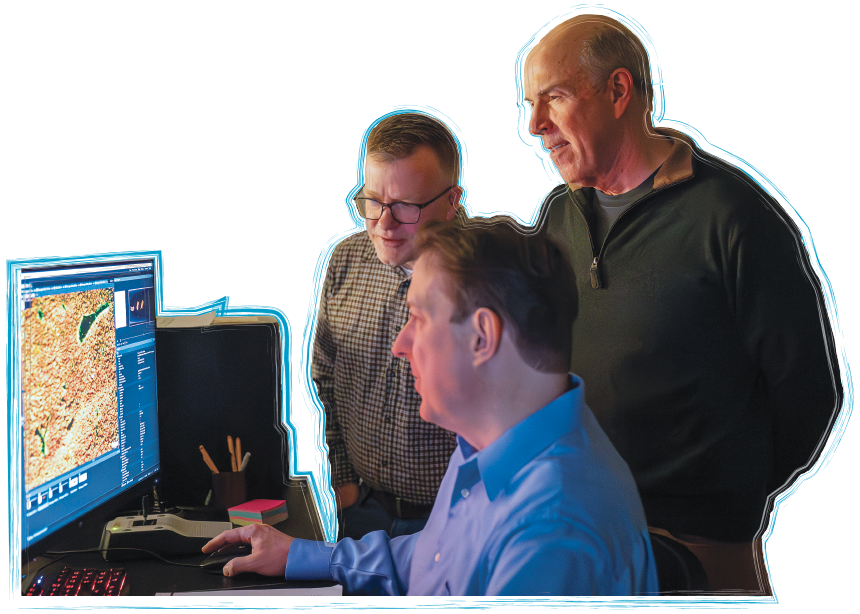

By Casey Williamson
Reading, formulating ideas, exchanging eureka moments with colleagues, and writing are the fundamental work of scientific discovery—time is the commodity that makes them all possible.
The Laboratory for Toxicologic and Environmental Pathology installed a new Olympus VS200 research slide scanner in 2021. At the time, Dr. Jack Harkema, director of the Laboratory and University Distinguished Professor, said that, in addition to “greatly improving our microscopic imaging capabilities,” the technology would streamline work—that is exactly what has occurred
This technology gives me one of the things I value most—time for my graduate students to read.
— Luyendyk Dr. James Luyendyk,
Dr. James Wagner, and Ryan Lewandowski
Dr. James Luyendyk,
Dr. James Wagner, and Ryan Lewandowski
Jack Harkema and the Laboratory for Environmental & Toxicologic Pathology: Contributing to science, policy, and health
In the March 2024 issue of Virus Research, Dr. Jack Harkema and a team from the University of North Carolina reported they developed mouse models for evaluating clinical and pre-clinical vaccines and therapeutics as new variants of Covid-19 emerge—an important development in combating a virus that continues to cause significant sickness and mortality.
Harkema, director of the Laboratory for Environmental & Toxicologic Pathology and the Mobile Air Research Laboratories, began investigating and making important contributions to our understanding of the environmental effects on respiratory health more than 40 years ago.
Research in the Laboratory for Environmental & Toxicologic Pathology has centered on why some conditions, such as cardiovascular disease, asthma, and obesity, may be more acute after exposure to particulate air pollution. The findings have contributed to knowledge and therapeutic interventions in areas extending beyond respiratory disease to:
The reach of the lab’s research reflects an attention to effective and creative models and methodologies, as well as an ongoing commitment to finding impactful ways to use emerging technologies.
Harkema’s work, such as the recently developed mouse models for COVID-19 research, continues to impact public health.
Scientists from the College and from other colleges across MSU, and across the country, are generating new knowledge with data acquired on the scanner. The images have supported research on topics including murine models for COVID-19, diabetes and ozone exposure, environmentally triggered autoimmunity, and drug-induced lung fibrosis.
In the year and a half since the technology was installed, dozens of research manuscripts have been published with findings supported by the scanner and its imaging capabilities, data storage abilities, and sharing technologies.
Many of the hours once spent bent over a microscope’s eyepiece are now spent at a desk with the image on a large screen. Researchers can adjust the magnification, zoom in and out, and more easily find specific locations on a slide. The computer becomes the microscope, one that is much easier to navigate. This all improves the process of enumerating findings: density, the numbers of cells, or other features.
“We’ve been performing histopathology, or visualizing tissue and organs, with microscopic slides for the last 25 years,” says Dr. James Wagner, associate professor of Pathobiology and Diagnostic Investigation. “We’ve been examining sectioned and stained tissues and organs under a microscope for hours on end. Now we have software for this morphometric analysis—measuring and counting aspects of the tissue.”
This work of enumerating the features of tissue that could require three to four weeks can now be completed in a week with morphometric software.
Ryan Lewandowski, manager of the Laboratory for Toxicologic and Environmental Pathology, keeps the slide scanner operations moving smoothly.
“Ryan is heart and soul of this instrument—he creates a seamless positive experience, a flawless process. We perceive him as a member of our team,” says Dr. James Luyendyk, professor of Pathobiology and Diagnostic Investigation. “The expertise and process are a major part of the technology’s value.”
Lewandowski, longtime manager of laboratories for Harkema, sees the many advances the scanner brings. He speaks of improvements in fluorescence, optics, scanning, and speed.
“We can support more projects, we deliver higher- quality images, and the technology makes the process of analyzing results much faster—and more comfortable.” 